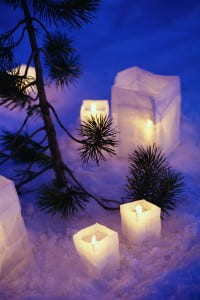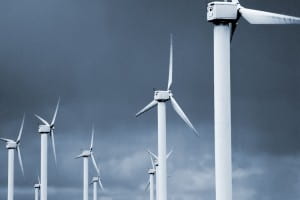 Tis’ the season for gift-giving, gift-receiving and, as a consequence, waste generation. Here’s some tips to consider that will put a greener-tinge to your holiday season.
Tis’ the season for gift-giving, gift-receiving and, as a consequence, waste generation. Here’s some tips to consider that will put a greener-tinge to your holiday season.
- Many thousands of paper and plast shopping bags end up in landfills every year. Reduce the number of bags thrown out by bringing reusable bags for holiday gift shopping. Tell store clerks you don’t need a bag for small or oversized purchases.
- Wrap gifts in recycled or reused wrapping paper or funny papers. Or use a used brown grocery bag you/your kids decorate for the occassion. Also remember to save or recycle used wrapping paper.
- Give a gift card. More than two-thirds of American consumers purchase at least one gift card as a holidy present for a loved one. They’re appreciated, they never expire, and they require no fancy gift-wrapping.
- Say “Happy Holidays” over the phone or internet. An estiamted 2.6 billion holiday cards are sold each year in the United States, enough to fill a football field 10 stories high. If every family reduced thier mailing list by just one card, the nationw ould save 50,000 cubic yards of paper. If you have Internet access, consider sending electronic holiday cards this year. Check the selection at commercial sites like hallmark.com, bluemountain.com, or 123christmascards.com. You can also check charitable support groups like care2.com or conservation groups like The Nature Conservancy.
- Repurpose old holiday cards – donate your old cards to a nursery or day care center for arts and crafts projects. Or, cut up cards to be used as gift tags, bookmarks, greeting cards, placemats, or decorations. Used cards, especially those with large pictures to cut out, can also be used as decorations. Just put a hole at the top of the card and knot a piece of string to lace through the hole to hang on next year’s Christmas tree, door handles, etc.
- Recycle that tree. Nationwide, an estimated 15 million used Christmas trees end up in landfills. Remember to recycle trees locally or turn them into mulch for water conservation and weed control in the garden. Reuse branches to make colorful holiday wreaths and separate the pine needles from tree branches to create tree-scented sachet bags. Or, consider an artificial tree or a “living” tree that can be replanted in the yard.
- Make room for new gadgets and toys. Outgrown toys, clothes and furniture may be donated to charitable groups like Goodwill Industries, The Salvation Army, American Cancer Society, or many local shelters and thrift stores.
- Shopping for a new cell phone? Americans ten to upgrade their cell phones every 18 to 24 months, and the U.S. EPA estimates Americans discard 125 million old cell phones annually, creating 65,000 tons of waste. What’s more, the old phones contain hazardous materials- including mercury, cadmium, and arsenic – that cannot be accepted at landfills. Look up cell phone recycling on the Internet and you’ll get back both sites where you can sell your phone as well as organizations that gratefully accept your old cell phone donation.
- Buy reusable batteries. About 40 percent of all battery sales occur during the holiday season. Consider purchasing rechargeable batteries instead as they can be used again and again. And don’t forget: at the end of their life, rechargeable batteries need to be properly recycled and not discarded in the trash. Check out call2recycle.org for battery recycling locations in the area.
- Consider the durability of a product before you buy it as a gift. Cheaper, less durable items often wear out quickly, creating waste and costing you money.
- When buying gifts, check product labels to determine an item’s recyclability and whether it is made from recycled materials. Buying recycled encourages manufacturers to make more recycled-content products available.
- Turn off or unplug holiday lights during the day. Doing so will not only save energy, but will also help your lights last longer.
- Recycle packing peanuts. Check with local postal shipping stores to see if they will accept foam peanuts for recycling. Call “The Peanut Hotline” at 800-828-2214 to find the nearest location, or check the Plastic Loose Fill Council website for a drop-off location near you.
Sources: U.S. EPA and Cal Recycle










